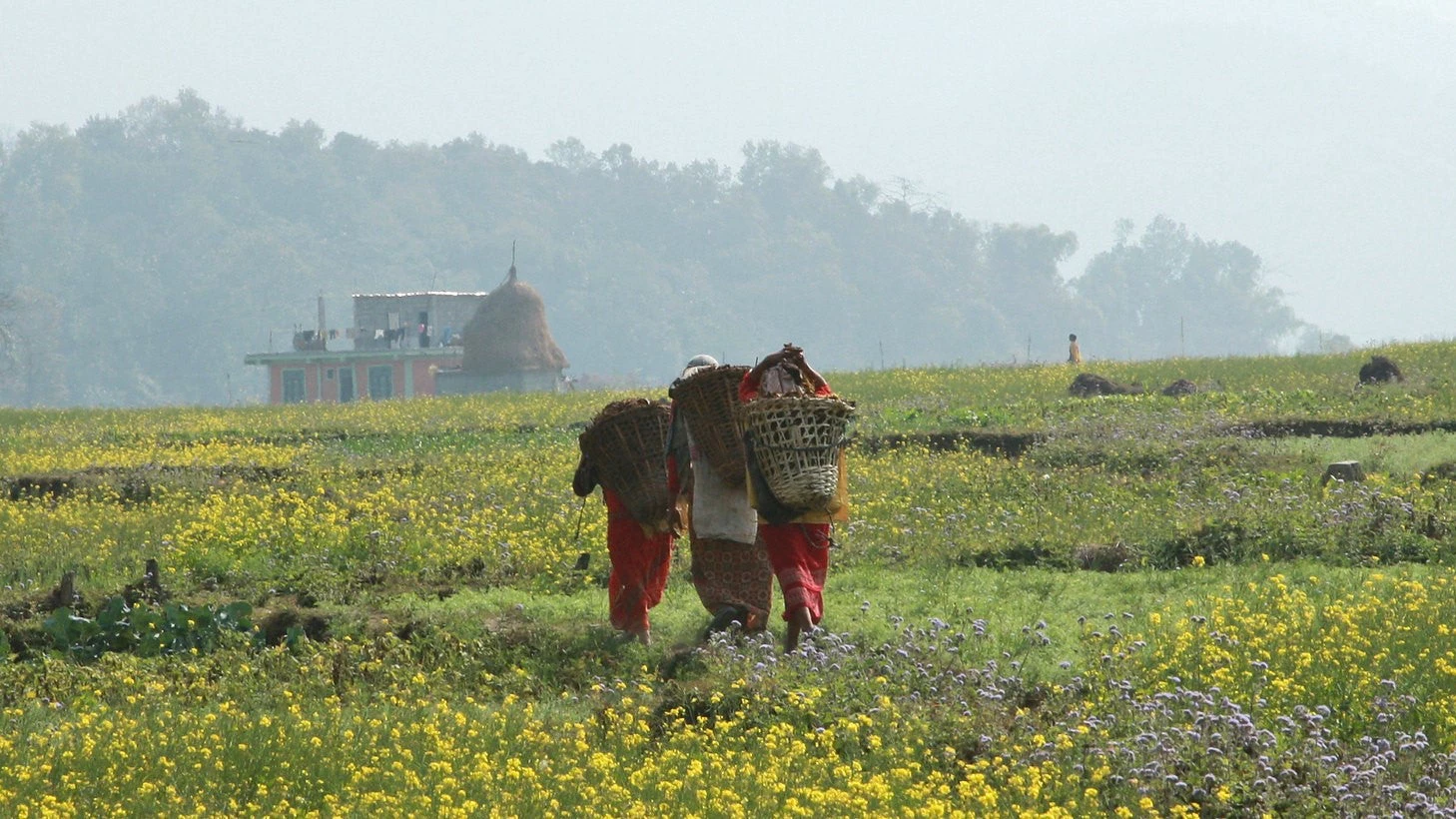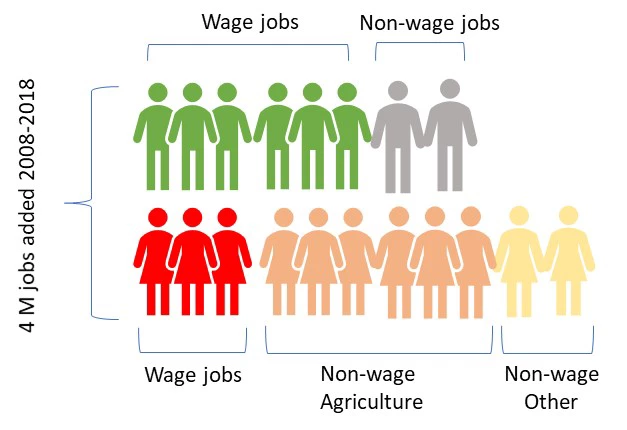 Nepal
Nepal
Nepal’s economy is making great strides toward better work opportunities for its labor force. But not all job-seekers are able to access good-quality jobs — especially women.
First the good news: Across the country, wage jobs increased from 17 percent to 24 percent of total employment over the last decade, contributing to higher household incomes and lower poverty rates. This growth is particularly concentrated in urban centers like Kathmandu, which has seen a population boom as rural workers seek more diverse and better paying jobs.
But there are not enough wage jobs to absorb all job seekers. Only four in 10 jobs within Nepal are paid, so many workers migrate abroad. By 2018, there were 3.8 million wage jobs in Nepal, while another 2.8 million Nepalese were employed in other countries.
The recently published Nepal Jobs Diagnostic indicates that most wage jobs are going to men. Although most women in Nepal work, the majority are unpaid . Nepal remains a highly rural economy where subsistence farming is the main economic activity for women. This means that most working women use their productive capacity to feed their families. Yes, this is an important use of women’s time, but it generates no income for them, underutilizes their human capital, and leaves them economically isolated and with limited agency. As a result, Nepal’s economy is losing out on much of the production potential of women.
A shifting economy
Things are changing, but faster for men than for women. Production is steadily shifting away from agriculture to industry and especially to services. Four million jobs were created over the last decade, across a mix of low-productivity and high-productivity sectors. After agriculture, the construction sector added the most jobs, providing well-paid wage employment especially for low-skilled men. The wholesale and retail sector added significant non-wage jobs, but these were of relatively low quality, concentrated in micro-sized family firms. The manufacturing and finance and business services sectors added significant wage jobs, but here, too, men benefited disproportionately. Altogether, men took up over two-thirds of the new wage jobs added to the economy since 2008.
 |
Figure Caption: Gender breakdown of wage and non-wage jobs added between 2008 and 2018
On the positive side, real wages increased in all sectors, and there are more jobs of higher quality today compared to 10 years ago. These gains translate into improved worker welfare on average. But faster progress is needed to absorb underutilized workers into better-quality and well-paid jobs.
Better jobs for more people
What would faster progress look like? More wage jobs, particularly for women; more jobs within firms, especially in small- and medium-sized enterprises (SMEs) with relatively high productivity; a dynamic and competitive SME sector; and higher levels of domestically added value in goods and services that are competitive on the global stage.
Evidence from a combination of data sources – labor force surveys, a 2018 census of firms, and a 2019 survey of 900 SMEs across 6 districts – points to a number of constraints to achieving better labor market outcomes in Nepal. One key impediment is Nepal’s dramatic topography, which makes access to wage jobs and to product markets costly. Also, most firms are micro-sized with one or two employees, have low productivity, and target small local markets rather than exporting or connecting to global value chains. Employers struggle to access financing and recruit higher-level skills needed to increase their product quality and expand operations. And gendered social norms limit female labor mobility and work opportunities, reflected by the fact that most women remain in unpaid work.
Effective policies for improving job outcomes in Nepal should focus on (a) fostering SME productivity and growth; (b) improving the business environment and labor market policies; (c) increasing the individual, family, and economy-wide benefits of international migration; and (d) preparing and connecting women and youth to better jobs, including entrepreneurship.
This blog is based on the Nepal Jobs Diagnostic, published in June 2020


Join the Conversation